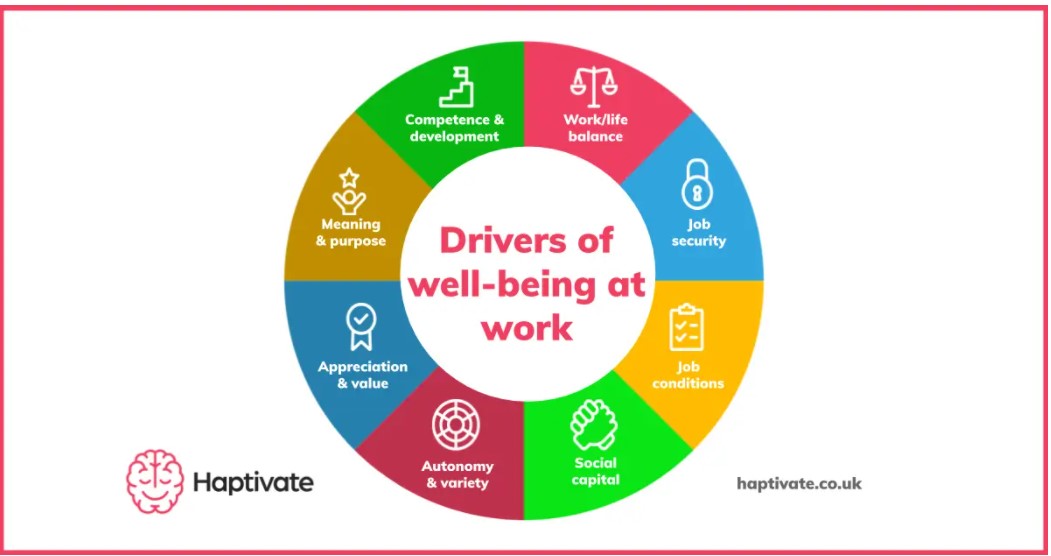There is a definition of wellbeing from the New Economics Foundation that feels quite appropriate when thinking about it in the context of work: “Wellbeing can be understood as how people feel and how they function, both on a personal and a social level, and how they evaluate their lives as a whole.”
Now, more than ever, we are becoming clearer on the significance of wellbeing at work. That the way we feel about ourselves and our lives overall has an impact on how we function and therefore perform at work, and how that in turn impacts the business we work for.
Wellbeing influences how we show up at work (and sometimes whether we show up at all), how we contribute and how we respond. It impacts our productivity, creativity and innovation.
A report by Deloitte in 2017 estimated a total annual cost to businesses of £45bn driven by absenteeism, presenteeism and staff turnover.
The stats confirm the same with some quantification:
- Happy workers are 20% more productive, 34% less likely to leave their jobs and 37% less likely to take time off sick.
- Dissatisfaction with work and job-related stress are two of the main causes of mental and physical ill-health in the UK
- Happier organisations are 21% more profitable, have 34% lower staff turnover and 37% less sick leave (Gallup)
- Happier organisations have 37% higher sales (HBR 2011) and 10% higher share returns (BITC 2013)
There are a number of benefits for both employee and employer when it comes to wellbeing in the workplace, and understanding that these benefits are not just personal, they can impact commercial metrics too, is critical to how you frame wellbeing for yourself, for your team, for your company.
Wellbeing is not a tactic, nor a fad. Wellbeing is a driver of performance, and therefore it makes good personal sense, and business sense to pay attention to it and to take action to influence it.
So, where do you start?
Haptivate have identified the following 8 drivers of wellbeing:

- Work-life balance – the ability to have the time and energy to do meaningful things outside of work, and reduce stress in the process
- Job security – knowing your job is safe or that it’s not safe, has a big impact on mental wellbeing
- Job conditions – the environment at work, the physical working conditions, and now the virtual working conditions and expectations, and adjustments for physical and mental health & safety
- Social capital – our social connections at work – friends, supportive colleagues, non-work related interactions, feeling you have someone to talk to, to turn to when your wellbeing is challenged at work
- Autonomy and variety – autonomy gives a sense of agency, variety kills boredom, and they can both encourage challenge and stretch, helping us feel effective
- Appreciation and value – our wellbeing improves when we are recognised for accomplishment, and achieving goals. This is about acknowledging progress and feeling rewarded for it
- Meaning and purpose – knowing the value of what you’re doing and how it relates to a bigger picture
- Competence and development – the opportunity to learn and grow on the job
For your own wellbeing at work, take a look at the drivers and rate how you feel about each one on a scale that works for you (e.g. 1 – 10 or low – high). Take a look at what drivers are not currently there for you, and think about which ones would make the biggest difference to your wellbeing if they were present for you.
Start there and think about what steps you can take to work on that driver.
If you are low on work-life balance:
- How can you find more balance?
- What do you need to do more of?
- What do you need to do less of?
Low on social capital? How can you increase connection with someone at work you feel comfortable with?
These drivers are a great framework to help determine tangible actions to improve your sense of wellbeing at work.
Take a look and see where you can start to improve your own sense of wellbeing, or that of your team to help improve your performance at work.